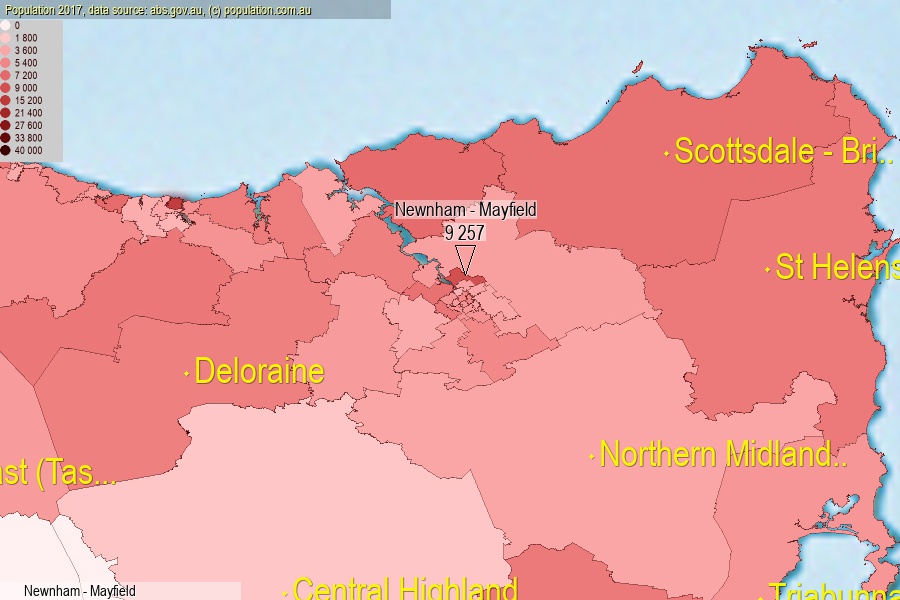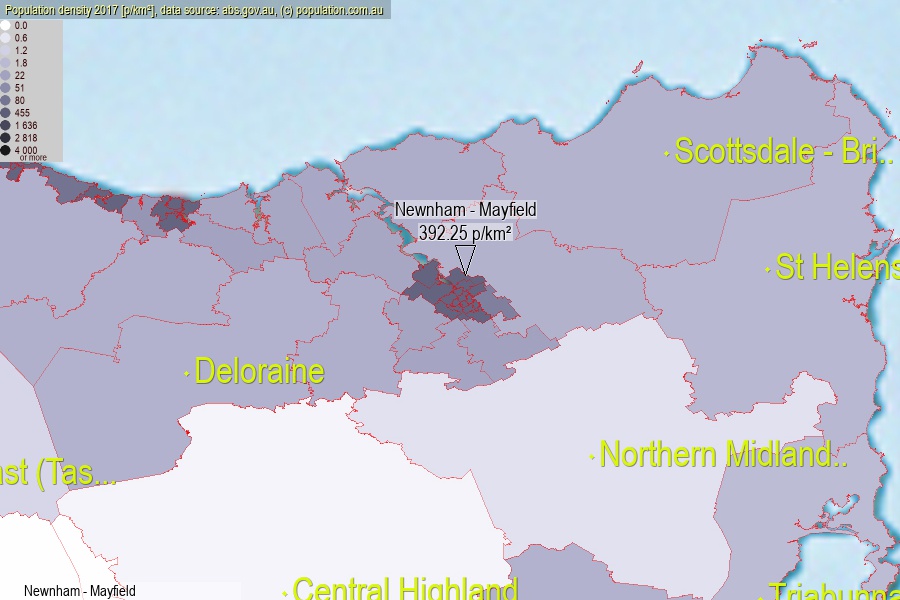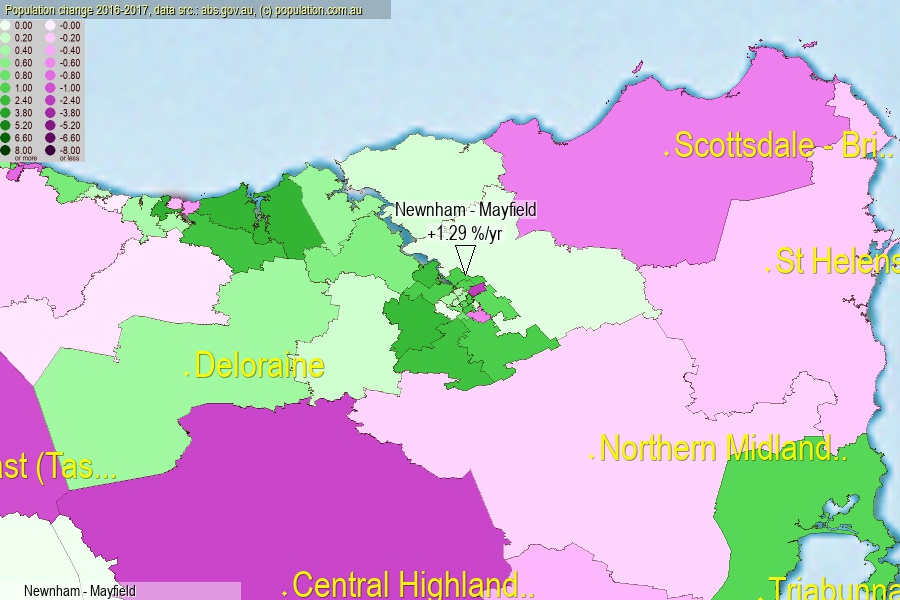 population.com.au
population.com.auLast official estimated population of Newnham - Mayfield (as Statistical Area Level 2) was 9 257 people (on 2017-06-30)[2]. This was 0.04% of total Australian population and 1.758% of TAS population. Area of Newnham - Mayfield is 23.60 km², in this year population density was 392.25 p/km² . If population growth rate would be same as in period 2016-2017 (+1.29%/yr), Newnham - Mayfield population in 2025 would be 10 258. [0]



Click to enlarge. Newnham - Mayfield is located in the center of the images.
Population [people], population density [p./km²] and population change [%/year] [2]
View borders » (new window) [4]
[1991-1992] -1.06 %/Yr.
[1992-1993] -1.71 %/Yr.
[1993-1994] -1.21 %/Yr.
[1994-1995] -0.56 %/Yr.
[1995-1996] +0.05 %/Yr.
[1996-1997] -0.65 %/Yr.
[1997-1998] -0.74 %/Yr.
[1998-1999] -1.02 %/Yr.
[1999-2000] -0.75 %/Yr.
[2000-2001] -0.53 %/Yr.
[2001-2002] +0.10 %/Yr.
[2002-2003] +0.97 %/Yr.
[2003-2004] +1.11 %/Yr.
[2004-2005] +1.27 %/Yr.
[2005-2006] +0.86 %/Yr.
[2006-2007] +2.33 %/Yr.
[2007-2008] +1.19 %/Yr.
[2008-2009] +0.74 %/Yr.
[2009-2010] +1.62 %/Yr.
[2010-2011] +0.71 %/Yr.
[2011-2012] +0.34 %/Yr.
[2012-2013] +0.41 %/Yr.
[2013-2014] +0.46 %/Yr.
[2014-2015] +0.48 %/Yr.
[2015-2016] +0.62 %/Yr.
[2016-2017] +1.29 %/Yr.
[0] Calculated with linear interpolation from officially estimated population
[1] Read more about SA2 and Australian Statistical Geography Standard (ASGS) on abs.gov.au
[2] Population data from Australian Bureau of Statistics (Population and density: 2017; change: 2016-2017)
[3] Digital Boundaries: Australian Statistical Geography Standard (ASGS) 2016.
[4] Border coordinates are simplifyed using Ramer-Douglas-Peucker algorithm.